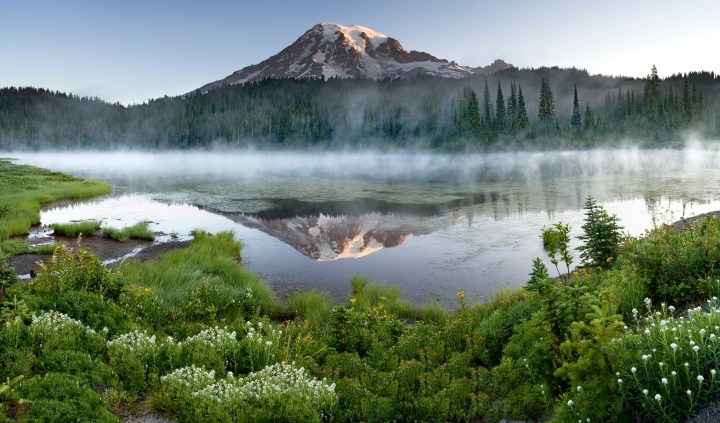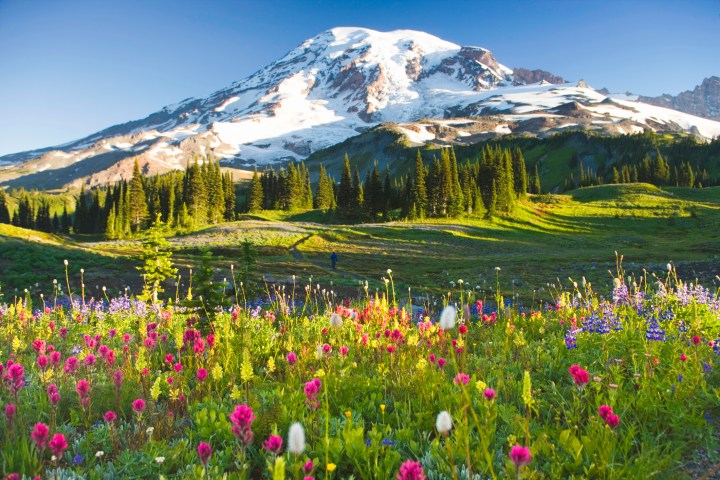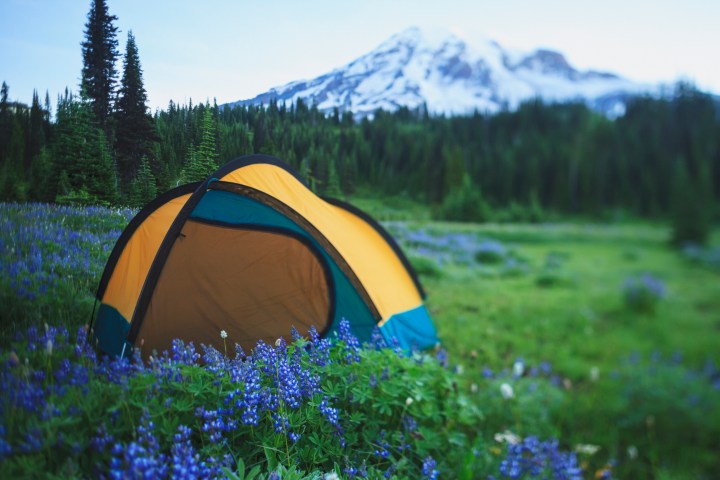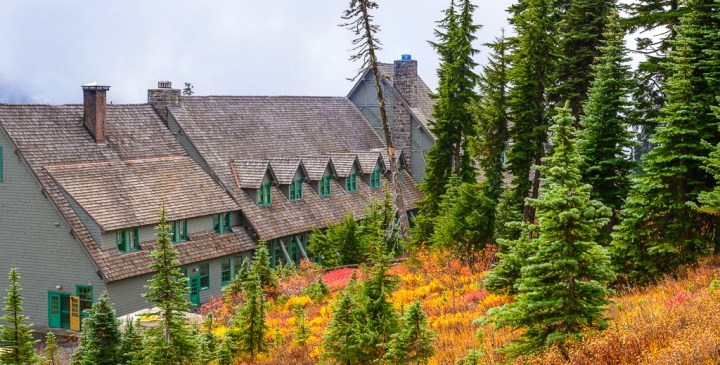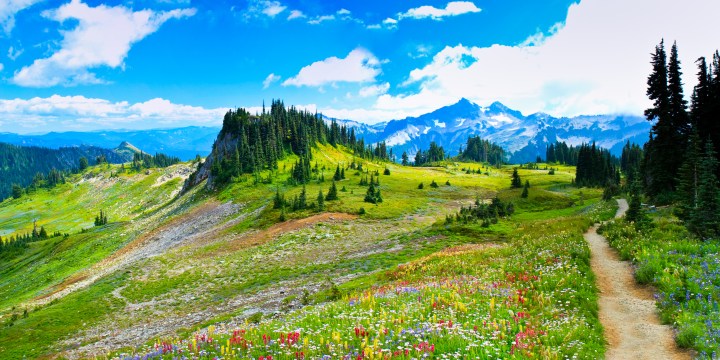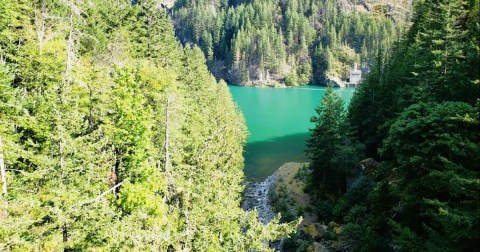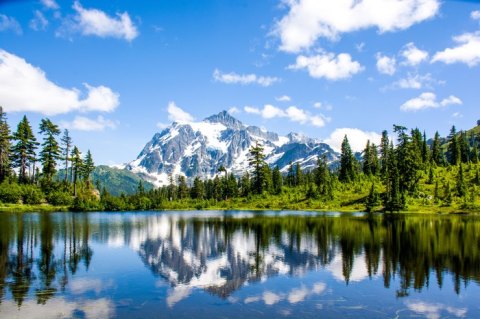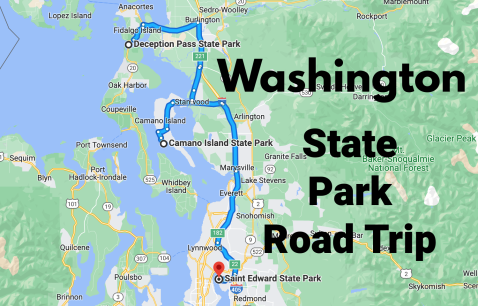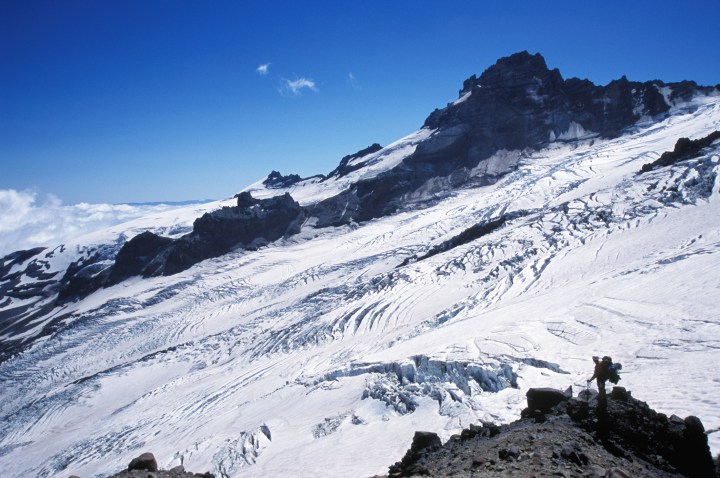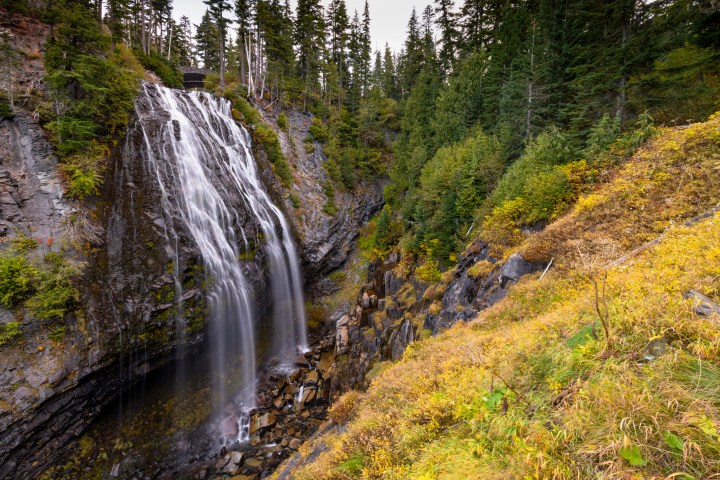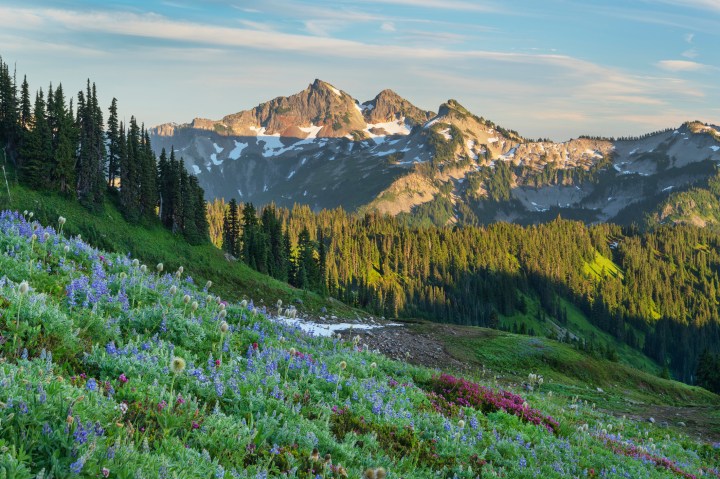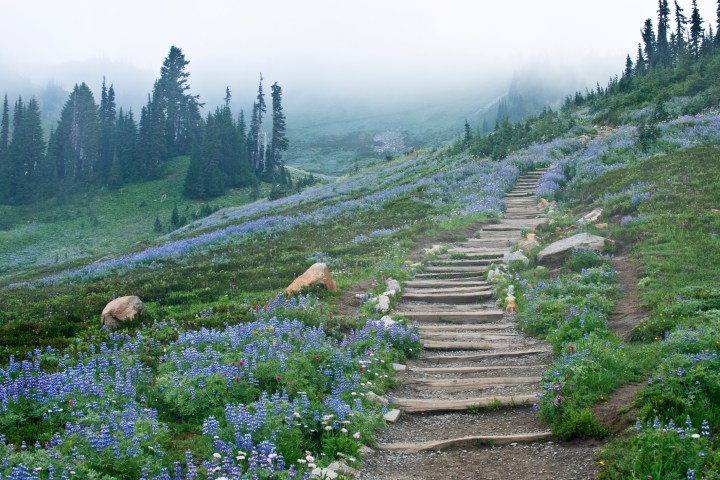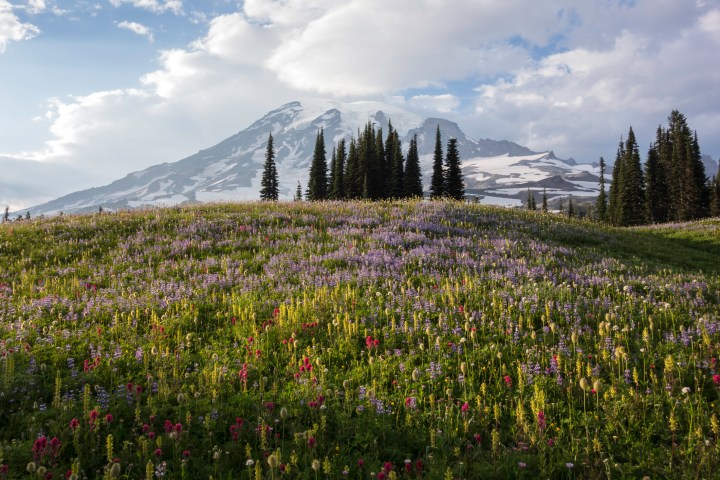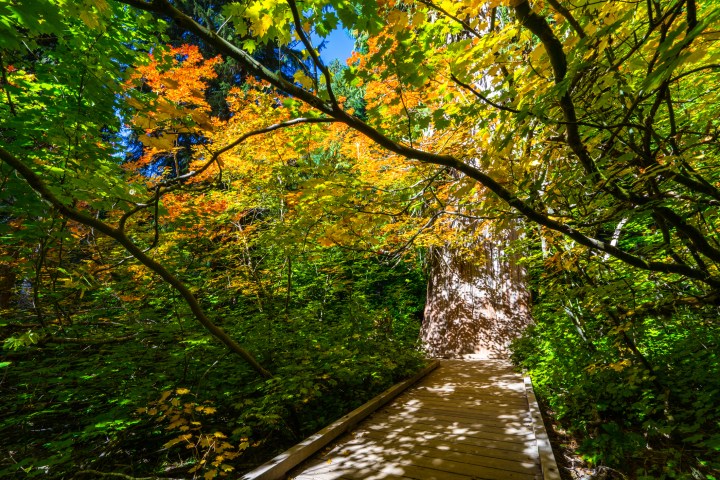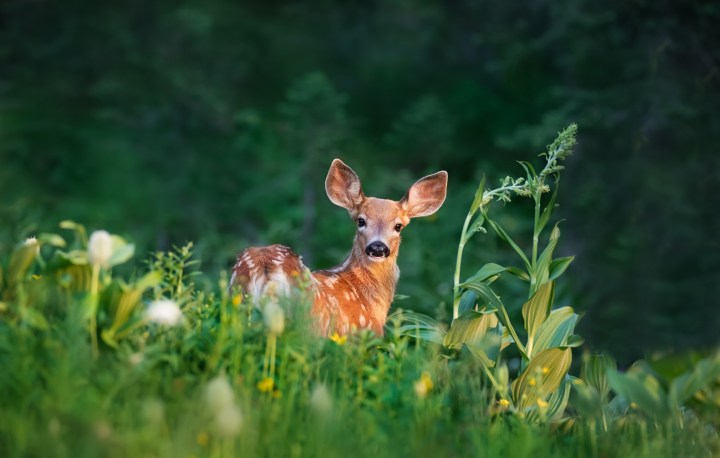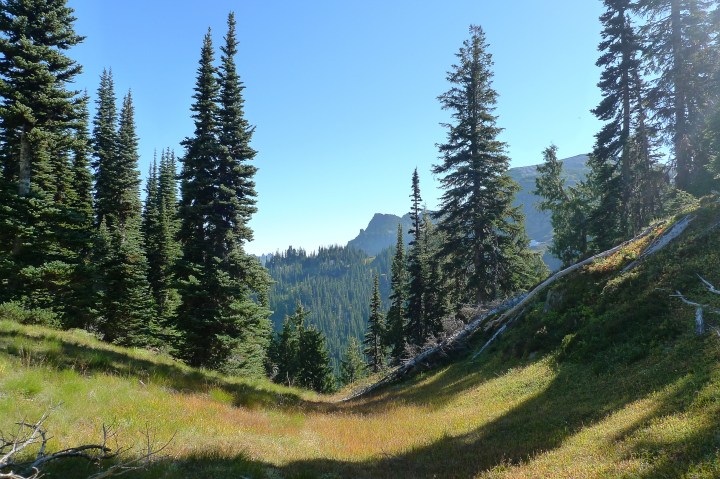The Ultimate Guide To Washington’s Mount Rainier National Park
Located about two hours southeast of Seattle and 2.5 hours north of Portland, Oregon, Mount Rainier National Park is the fifth national park in the United States and the most glaciated park in the lower 48. Known for its extraordinarily beautiful landscape, this national park is home to rolling hills, flower-covered meadows, astonishing mountains, breathtaking valleys, crystalline lakes, and an episodically active composite volcano. With so many natural wonders to experience, Mount Rainier is a popular destination for locals and visitors alike.
The Park’s History
The creation of the park began when an array of groups came together to form a lobbying campaign in 1893 — environmental scientists, conservationists, local businesses, mountaineers, and even large railroad companies recognized the unique beauty of Mount Rainier. Despite the fact that these groups often held contrasting perspectives, all parties noticed the potential benefits that could come from protecting the area. Thus, an effort was put into forming a national park around the great summit of Mount Rainier. After some hesitation from congress, the fifth national park was officially established in 1899, once it was confirmed that the endeavor would not impose added expenses on the government.
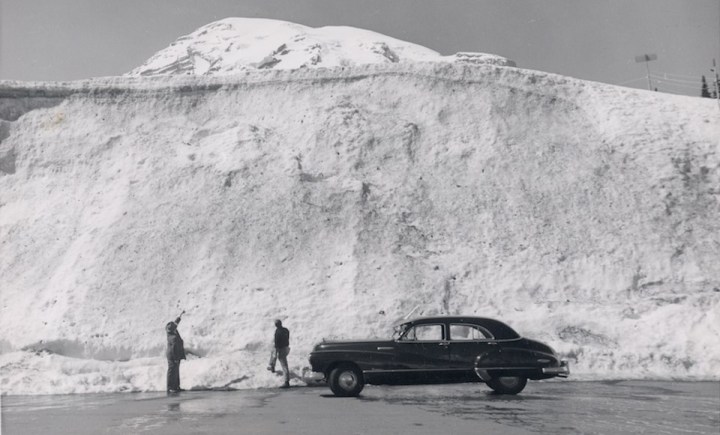
Over the past 123 years, much about Mount Rainier has changed. The number of visitors that come to explore the unbelievable beauty of this special place has dramatically increased over time. Because of this, various zones of the park have been designated in order to manage the impact of tourism. As time has passed, our understanding of how to best care for the land and its resources has evolved and will continue to do so. One thing that has remained constant, however, is the undeniable exceptionalism of Mount Rainier National Park, for its unparalleled natural scenery, wildlife, and more.
It’s important to note that despite being officially established as a national park in 1899, this special place has a far longer history with the area’s Indigenous Peoples — specifically, the Cowlitz, Muckleshoot, Nisqually, Puyallup, Squaxin Island, Yakama, and Coast Salish people, who have had deep ties with this land for countless millennia. The Mountain was originally referred to as variations of the word Tahoma or Tacoma, which could translate to “the mountain,” “the Supreme Mountain,” “snow-covered mountain,” or even “the source of nourishment from the many streams coming from the slopes.” The area’s Indigenous People have long cared for this land and maintained traditional ties to it, and today, Mount Rainier maintains active relations with tribes in the area.
“Rainier” came from Captain George Vancouver, who sailed into the Puget Sound in 1792 and named the incomparable summit after his friend Peter Rainier, an English Naval officer who fought for Britain during the Revolutionary War. Today, the question of whether or not Rainier is an appropriate name for the great mountain is debated heavily. Regardless, this national park remains an iconic landmark for residents of Washington and visitors to the area for its unique attributes and astonishing landscape.
What Makes Mount Rainier So Special?

Washington State is home to some of the most magnificent natural wonders in the United States, which is due to its particularly diverse climate, as well as the numerous geographical features that were left behind from the Ice Age. With such an abundance of mesmerizing scenery, it’s nearly impossible to call any particular location in the Evergreen State the most beautiful — especially when Olympic National Park isn’t too far. As far as U.S. National Parks go, however, Mount Rainier is definitely at the top of the list.
In addition to being home to some of the most iconic and enchanting sights in the Pacific Northwest, Mount Rainier National Park has certain attributes that are particularly significant when compared to other beautiful regions. First of all, Mount Rainier is the highest point in the Cascade Mountain Range, as well as the fifth-tallest mountain in the lower 48 overall. It’s also the highest volcanic peak in the lower 48, towering at an elevation of 14,411 feet.
Keep in mind that elevation is not the same thing as prominence — elevation is the summit’s height in relation to sea level and its prominence is its height in relation to the surrounding terrain. It’s not quite as simple as that, but this basic premise is worth noting when considering the impressive stature of Mount Rainier’s summit. While its elevation is 14,411 feet, its prominence is 13,212 feet. Compared to other incredible mountains of the world, this number is extraordinary. The Matterhorn in Switzerland, for example, has a prominence of 3,412 feet, compared to its elevation of 14,692 feet. What this ultimately means is that Mount Rainier is actually one of the biggest mountains in the world in terms of how much of it you can actually see at once.
A part of the Pacific Ring of Fire, Mount Rainier is in fact an active volcano. Second to Alaska, it has the largest alpine glacial system, and it’s also the largest volcanic glacier cave system in the world. Eruptions in the past have shaped the landscape surrounding the summit, and they will continue to do so in the future. Despite this, geologists confirmed in early 2022 that they have no expectation of eruptions anytime soon. The U.S. Geological Survey thoroughly monitors the area and will provide warnings of any future eruptions or volcanic activity.
Aside from the remarkable summit, this national park is 97 percent protected wilderness. The area is home to incredible plants and wildlife, including a remarkable specimen of Douglas Fir. It also hosts an amazing variety of alpine vegetation and ecosystems. As time goes on, this designated region of protected land allows us to experience nature in all of its intimidating glory and such an opportunity is profound. Mount Rainier National Park is truly emblematic of the Pacific Northwest, and a trip to this spellbinding place would surely be unforgettable.
How To Get To Rainer National Park
Visitor Centers, Hours, and Fees
So what exactly do you need to know in order to visit this National Park? For starters, take a look at the different passes and entrance fees available. Passes range from unlimited entry for one year to unlimited entry for seven consecutive days. If you plan on camping, there’s a $20 nightly fee for one site and a $60 nightly fee for groups of 25 to 40 people. Once you figure out what passes you’ll need for your visit, you can purchase them digitally through recreation.gov and save time.
When you arrive, a stop at a visitor center can provide more useful information and some education about the area. The Longmire Wilderness Information Center is located in the historic administration building and has a 3D model map of the park. On a clear day, this spot offers beautiful views of Mt. Rainier and feels very picturesque with its rustic architecture.
Entrances
Mount Rainier has four entrances — the Nisqually entrance, Carbon River entrance, White River entrance, and Stevens Canyon Road entrance. All but the Nisqually entrance are open seasonally — from late October or from the first snowfall (whichever comes first). The White River, Stevens Canyon Road, and Carbon River entrances close for the season. The Carbon River entrance is accessible only by bike or foot.
Best Time To Visit
Located in the West-Central region of Washington, Mount Rainier National Park is within 200 miles of many surrounding cities. To get to the Nisqually Entrance, put 39000 State Route 706 E, Ashford, WA 98304 into the GPS. If visiting during the summer, be sure to anticipate heavy traffic and note that it can be difficult to find parking on weekends. The number of people in the park reaches its peak during July and August, as the wildflower meadows are in bloom. And of course, the warm weather is nice. Despite the popularity, if you arrive early in the day or visit mid-week, you can potentially avoid the crowds.
While some of the park’s features are only available in the summer, a visit in late April or early October is also beautiful. The park is full of brilliantly colorful plant life during these seasons, and visitors can experience a more tranquil experience due to the lack of other people. Winter in Mount Rainier is truly a wonderland, but keep in mind that access to the park is limited during this time. Be sure to also check the road status of the area before you arrive and use caution while driving!
Where To Stay In Rainer National Park
Camping
Camping is a great option if you plan to spend multiple days in Mount Rainier National Park, and there are four designated areas available from late spring to early fall. Three out of these four sites allow vehicles, while one campground is only accessible by foot.
Cougar Rock Campground, Ohanapecosh Campground, and White River Campground are the three sites that allow vehicles. Each area is situated at a different point in the park — Cougar Rock Campground is the most popular place for campers with an alpine-like environment. Ohanapecosh Campground is the second most popular, with its woodland environment, and White River Campground is known for its access to a quiet forest in the backcountry section of the park. Do keep in mind that you’ll need a permit if you chose to stay at one of these campgrounds.
Mowich Lake Campground takes a bit of effort to reach, but this gorgeous, walk-up entry is definitely worth it. This site offers fewer sites than the other spots, making this camping experience feel much more remote. Offering breathtaking views, this immersive overnight experience is completely free.
Lodging
If a camping adventure sounds a bit too rugged, there are two inns located in the national park. In the Longmire Historic District, the National Park Inn offers 25 rooms, a dining room, and a general store. This accommodation is open all year, offers incredible views of Mount Rainier, and is a short drive from the popular Paradise area. There’s also the historic Paradise Inn, built in 1916, this charming lodge looks plucked out of a storybook. It sits at an elevation of 5,420 feet and offers 121 guest rooms, cafe, restaurant, gift shop, and more.
Places To Stay Near Mount Rainier National Park
There are more options for accommodations surrounding the park if you’d like to stay in a hotel or rental home. Ashford is just six miles from the park’s boundaries, and there are many charming hotels and restaurants in this area. If you’re looking to experience outdoor adventures during the day and have a more relaxed vacation at night, a stay in Ashford is a great option.
Things To Do In Mount Rainier National Park
Mount Rainier National Park is 236,380.89 acres — that’s 369.34 square miles. This iconic region of the Pacific Northwest can be a day trip destination to Paradise, a three-day trip across the park, or even a two-week journey through the Wonderland Trail! And the wilderness that lives within the park boundaries is filled with unbelievable scenery including breathtaking waterfalls, colorful wildflowers, crystal-clear lakes, wildlife, and more. Whether you’re a seasoned mountain climber, a casual hiker, or even someone who doesn’t call themselves an outdoors person, Mount Rainier is the kind of place that anyone can appreciate.
Each year, thousands of people attempt to reach the summit of Mount Rainier itself. In 2021, 9,138 people began the journey, and about half of them actually reached the top. The climb to Mt. Rainier is incredible, but it’s known to be quite strenuous. If you’re thinking of attempting to climb the summit, be sure to do proper research ahead of time. Ascending this mountain is no small feat — literally!
The stunning nature surrounding the mountain itself is what makes this national park so beloved. There is so much to see and do, and the trails are some of the best hikes in the U.S. However, there are some trails and waterfalls that are particularly special, and worth making a priority if it’s your first time.
Comet Falls are dramatically beautiful and their name comes from their resemblance to a comet. This spot is incredibly popular, as it is close to the Nisqually Entrance of the park. Just over ten miles from the entrance, these waterfalls are iconic for a reason.

Just past Comet Falls, Christine Falls may be smaller, but this area is special in a different way. On the way to the popular Paradise section of the park, Christine Falls is a highly photographed subject due to its picturesque, arched bridge that spans the falls. This spot is one of the prettiest in all of the park.
As you make your way to Paradise, Narada Falls is a must-see. These falls are very popular with visitors due to their distinctive beauty. Narada Falls is considered a horseshoe fall due to the multiple channels on the face of the rock. There is a hiking trail here, but there is often snow until late May. In the summer, if you choose to explore the area, be aware that the loop trail may be wet and slippery.
One of the most popular spots in all of Mount Rainier, it’s easy to see where Paradise gets its name. This area is one of the most iconic in Mount Rainier National Park due to its unbelievable, spellbinding scenery. The wildflowers that bloom in the warmer months are simply magical to experience, and the views of the mountain are absolutely striking.
This is the section of the park that also hosts a good deal of winter activity as well. When snow is on the ground, you’ll likely see sledding, snowshoeing, skiing, and more. Throughout the year, however, there are some really great trails in this section, including a day hike that’s particularly easy for families. You can also climb 1,000 feet in less than a mile at Panorama Point, whose trailhead is located in this area. Paradise is a must-see if you’re visiting.
The main hiking trail out of Paradise is called the Skyline Trail. This path is popular for its incredible views of Tahoma Mountain, where you can also see waterfalls, glaciers, and meadows on your way. This trail is popular for good reason — the surrounding beauty feels almost dreamlike and this is a great spot to see some incredible wildlife.
Another popular area of the park is Sunrise, which sits on the northeast side of Mount Rainier. This section of Mt. Rainier National Park is accessible from Sunrise Park Road, which is a scenic drive through the region. While it’s not as frequented as Paradise, Sunrise offers an experience that may feel less “touristy.” This section is usually less crowded, and the unpaved trails are loved by visitors looking to feel more immersed in the surrounding nature. Be advised that this area does not have an overflow parking lot, so you may have to wait in your car to enter if it’s a busy day. But the views are well worth the wait. This section also has access to the Fremont Lookout, which also offers iconic views.
Along Stevens Canyon Road, Reflection Lake is known for its remarkable reflection of the mountain. The clear waters of the lake are surrounded by several trails, and all of them offer some incredible views. While this is not a place for boating or fishing, this lake is accessible in the winter and campers can stay overnight around the snow-covered lake.
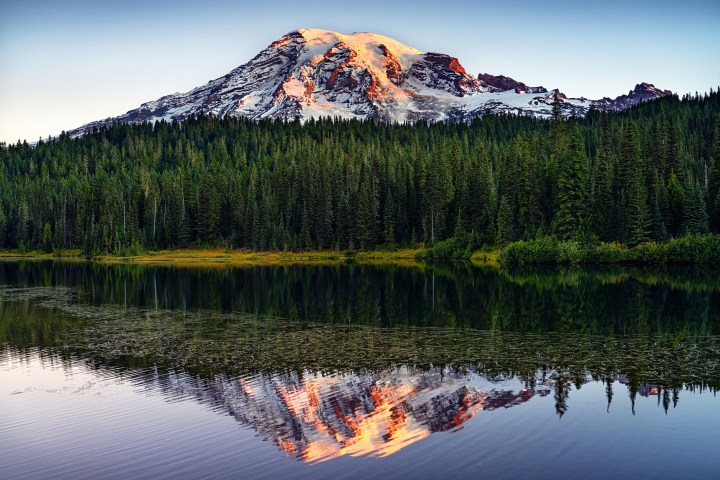
On the other side of the park, the Grove of the Patriarchs is one of the most magical areas in all of the region. Cross a suspension bridge over the Ohanapecosh River to reach an island of giant, thousand-year-old trees. This old-growth forest is home to Western Red Cedars, as well as other ancient trees with extreme heights. This spot is another must-do if you’re in the area and since it is a very easy hike, anyone can experience this beauty that is almost beyond words. A stop here will undoubtedly be one of the most memorable of your visit.
Mount Rainer National Park Wildlife
There are many other trails and even more beautiful attractions, including an abundance of majestic wildlife to observe. Mount Rainier National Park is home to a variety of chipmunks, squirrels, elk, deer, marmots, mountain goats, and countless others. There are black bears and mountain lions in the park, and these animals are the most feared in the area. Be sure to always be respectful of the wildlife! And while it is unlikely you’ll encounter some of the more fearsome creatures of the forest, sightings are definitely not unheard of and it’s recommended to research beforehand so you can remain safe during your visit.
If you’re looking to really immerse yourself in the magic of Mount Rainier, there is an option to hike around the mountain. Wonderland Trail usually takes 10-14 days to complete. The path is 93 miles around the base of Tahoma, and the journey has been called life-changing on more than one occasion. That being said, this trail isn’t necessarily for the faint of heart. It’s recommended to use caution on this trail, anticipate the elevation gain, and plan a safe distance between campsites. Park Rangers often see hikers overexerting themselves and this can lead to a lot of discomfort for everyone. If you’re prepared and ready to handle it, however, this trail really is a wonderland.
Mount Rainier is not only one of the defining emblems of the Pacific Northwest; it’s one of the most iconic mountains in all of North America. With its many incredible glaciers, stunning landscapes, and breathtaking views, there’s no shortage of magic to experience in this alpine wilderness. If you’re in Washington, a visit to Mount Rainier National Park is truly an unmatched experience. But even if you’re far away from the Pacific Northwest, you wouldn’t be alone in wanting to travel to see the majesty of the wondrous place. Be sure to practice no-trace if you choose to visit, and remember that it’s up to all of us to respect and care for the world’s nature and wildlife. Visit the Mount Rainier National Park website for more detailed information, and also adhere to the information provided by the National Park Service. If you choose to visit this national park, you’ll surely have a memorable time.
OnlyInYourState may earn compensation through affiliate links in this article. As an Amazon Associate, we earn from qualifying purchases.


